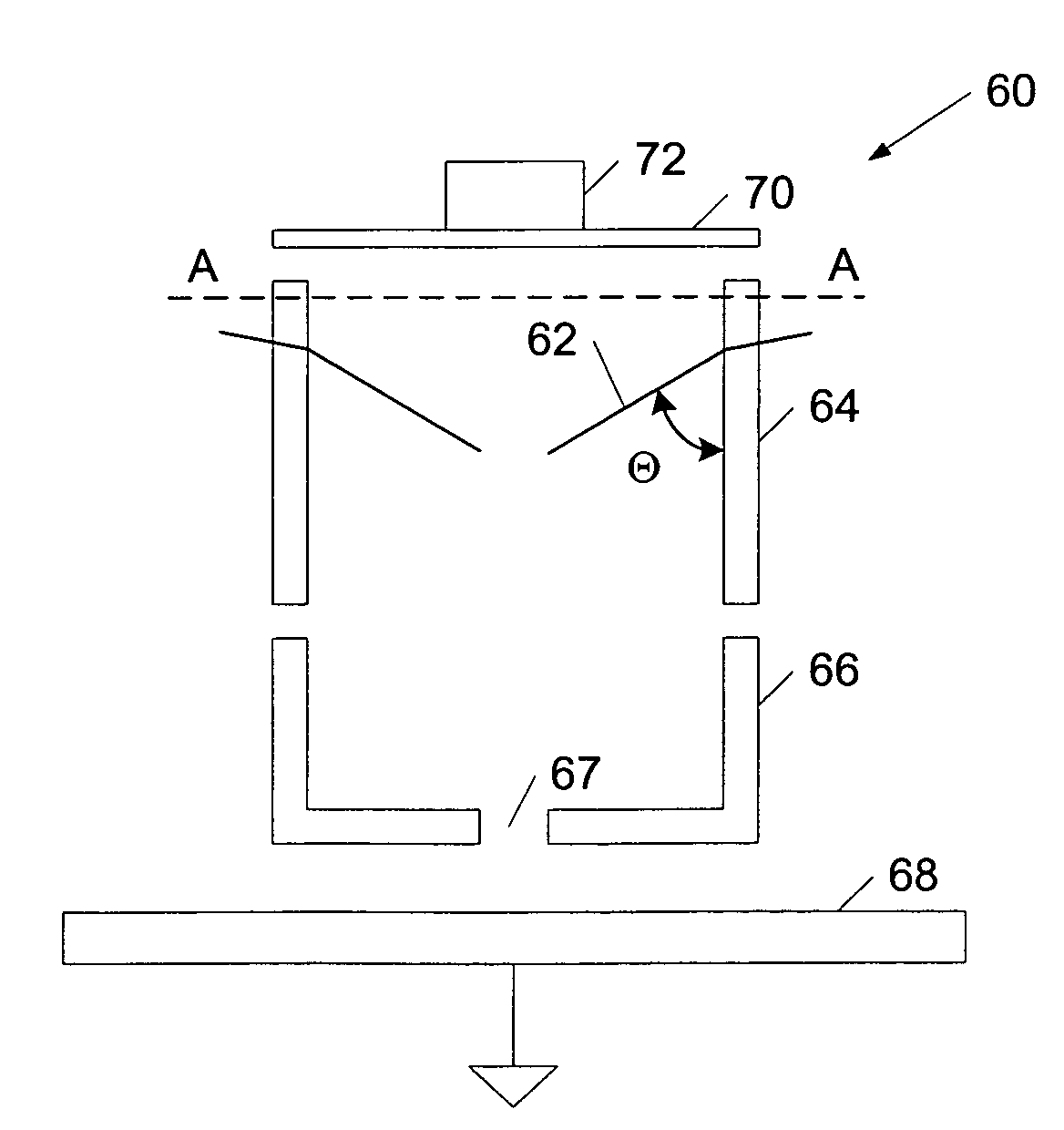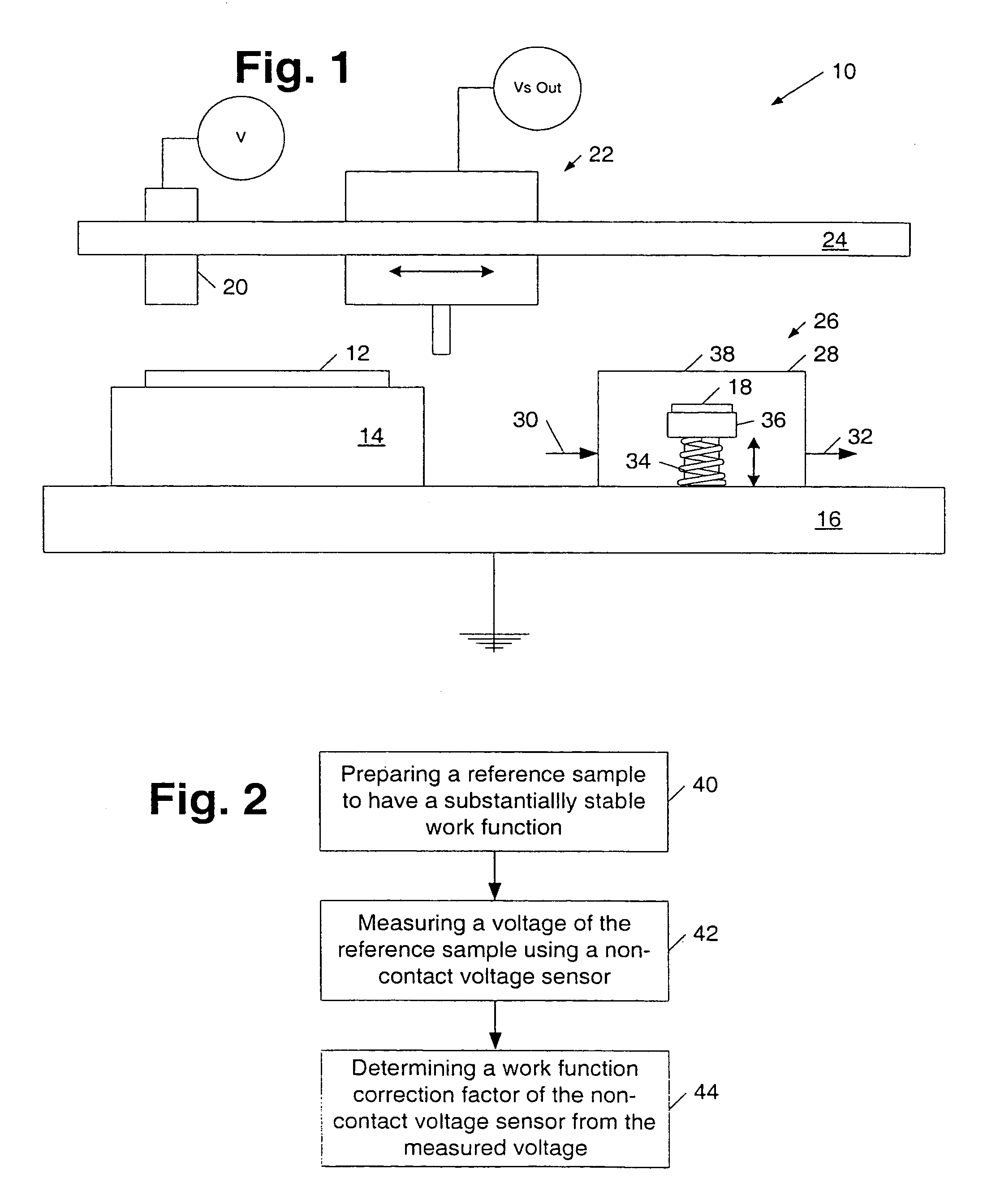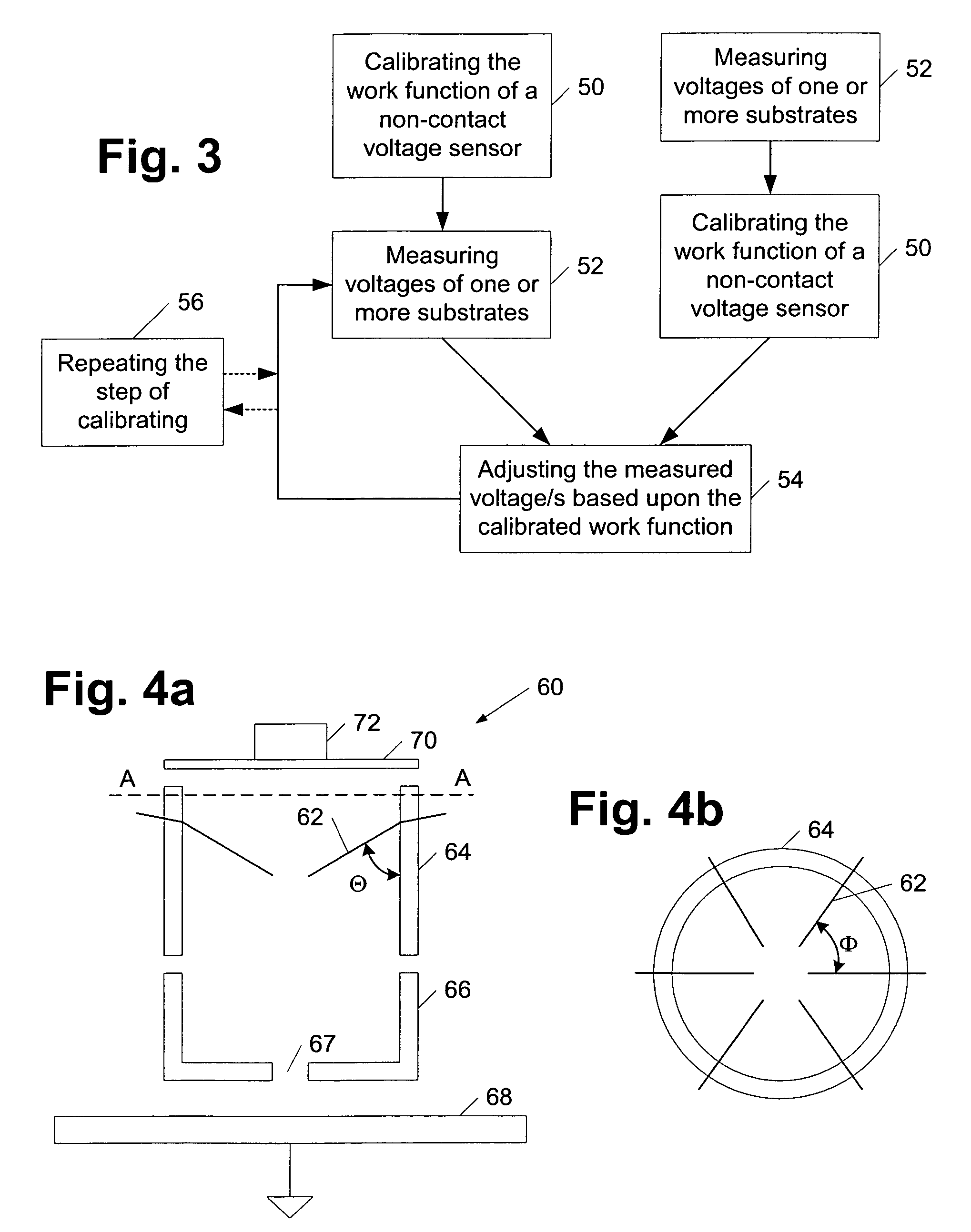Systems and methods for using non-contact voltage sensors and corona discharge guns
a voltage sensor and non-contact technology, applied in the field of microelectronic device manufacturing, can solve the problems of reduced production efficiency and device quality, low deposition rate, measured voltage including, etc., and achieve the effect of avoiding the use of ultra-high vacuum, accurate voltage measurements of substrates, and accurate values pertaining to electrical properties of substrates
- Summary
- Abstract
- Description
- Claims
- Application Information
AI Technical Summary
Benefits of technology
Problems solved by technology
Method used
Image
Examples
Embodiment Construction
[0031]Turning now to the drawings, exemplary embodiments of systems and methods for determining properties of a wafer using non-contact electrical testing techniques as well as different configurations of corona discharge guns are illustrated in FIGS. 1–6. More specifically, FIG. 1 illustrates an exemplary embodiment of a system that employs non-contact electrical testing techniques for determining properties of a microelectronic topography, while FIGS. 2 and 3 outline methods of using such a system. In addition, FIGS. 4a–6 illustrate exemplary configurations of a device used to deposit corona charge upon a topography for electrical testing. It is noted that the systems and methods illustrated and described in reference to FIGS. 1–6 are not co-dependent and, therefore, may not necessarily be employed together.
[0032]An example of a system configured to measure charge density and voltage using non-contacting techniques is illustrated in FIG. 1. In particular, system 10 is shown config...
PUM
| Property | Measurement | Unit |
|---|---|---|
| angles | aaaaa | aaaaa |
| angles | aaaaa | aaaaa |
| width | aaaaa | aaaaa |
Abstract
Description
Claims
Application Information
 Login to View More
Login to View More - R&D
- Intellectual Property
- Life Sciences
- Materials
- Tech Scout
- Unparalleled Data Quality
- Higher Quality Content
- 60% Fewer Hallucinations
Browse by: Latest US Patents, China's latest patents, Technical Efficacy Thesaurus, Application Domain, Technology Topic, Popular Technical Reports.
© 2025 PatSnap. All rights reserved.Legal|Privacy policy|Modern Slavery Act Transparency Statement|Sitemap|About US| Contact US: help@patsnap.com



